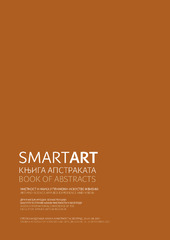Приказ основних података о документу
Interior in Context: Principles of Interior and Exterior Integration
| dc.creator | Simonović Alfirević, Sanja | |
| dc.creator | Alfirević, Đorđe | |
| dc.date.accessioned | 2022-10-28T08:31:07Z | |
| dc.date.available | 2022-10-28T08:31:07Z | |
| dc.date.issued | 2021 | |
| dc.identifier.isbn | 978-86-80245-44-7 | |
| dc.identifier.uri | http://raumplan.iaus.ac.rs/handle/123456789/672 | |
| dc.description.abstract | The subject of this research includes design principles through which the integration of interior and exterior can be achieved. The principles are grouped according to the role they play in achieving the relationship between outer and inner space. Two directions of possible interactions are considered: a) the influence of the interior on the exterior and b) the influence of the exterior on the interior. The structure of design principles is conceived by applying the deductive method and is derived from the basic motives that most often cause interactions between the interior space and the environment. The analysis of characteristic motives, which are mainly a consequence of the extroverted or introverted nature of the user, the desire for intimacy or presenting material status, etc., formulates design principles that provide an answer to the needs for integration of interior and exterior. The principles are clearly presented using characteristic examples of modern concepts of spatial organization and interior design. The main goal of the research is to determine a methodical structure of creative principles, which enable the integration of interior and exterior, and supporting that relation at the same time, but also to check the stance that the architect's shaping of the user's desire to perceive the immediate environment is sufficient for the basic connection of external and internal space. In addition, it is important to emphasize that for higher levels of the mentioned integration, it is necessary for the user to see, but also to be seen, i.e. that there is a mutual interest in the interaction of both the user of the interior space and the observer who experiences the interior from the environment. The results of the research indicate, first of all, the existence of a larger number of creative principles by means of which it is possible to connect the interior space with the immediate environment. On the other hand, the paper states a close cause-and-effect relationship of motives, which arise from the specific users’ needs and the architect’s competence to recognize the wishes of users and articulate them in a contextual visual expression. | sr |
| dc.language.iso | en | sr |
| dc.publisher | Belgrade : Faculty of Applied Arts, University of Arts in Belgrade, Serbia | sr |
| dc.relation | info:eu-repo/grantAgreement/MESTD/inst-2020/200006/RS// | sr |
| dc.rights | openAccess | sr |
| dc.source | SmartArt Book of Abstracts, Second International Conference of the Faculty of Applied Arts in Belgrade, SmartArt – “Art and Science Applied: Experience and Vision” | sr |
| dc.subject | architecture | sr |
| dc.subject | interior | sr |
| dc.subject | context | sr |
| dc.subject | human needs | sr |
| dc.subject | experience of space | sr |
| dc.title | Interior in Context: Principles of Interior and Exterior Integration | sr |
| dc.type | conferenceObject | sr |
| dc.rights.license | ARR | sr |
| dc.citation.spage | 78 | |
| dc.citation.epage | 78 | |
| dc.citation.rank | M34 | |
| dc.description.other | Editors: Milan Prosen, Irena Živković. | sr |
| dc.identifier.fulltext | http://raumplan.iaus.ac.rs/bitstream/id/2787/Knjiga-apstrakta-Book-of-Abstract_M34.pdf | |
| dc.identifier.rcub | https://hdl.handle.net/21.15107/rcub_raumplan_672 | |
| dc.type.version | publishedVersion | sr |

